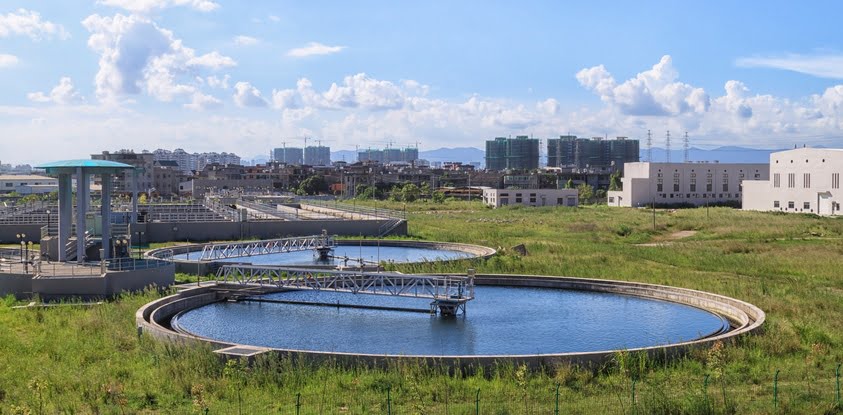How Are Enclosure Air Conditioners for Water Treatment Different?

Designing an enclosure cooling system for a water treatment plant is different than for most other industrial settings. The environment in and around the plant is far more likely to have high humidity, and to be exposed to the corrosive liquids and vapors from the harsh chemical reagents required to sterilize the infrastructure from viruses, bacteria and other toxins present in the wastewater stream.
While these chemicals are necessary for purifying the water, they are highly destructive to the electrical and electronic equipment used to operate the blowers, pumps, fans and filters running the plant. Unfortunately, confining these components within a protective enclosure allows waste heat to build up. This excess heat will negatively affect their operation, leading to decreased efficiency, increased maintenance time and costs, and ultimately potential catastrophic failure.
If the enclosure is situated near a source of heat, such as a boiler, or is located outdoors where it receives direct insolation, the heat in the enclosure will be increased further. In the presence of all these threats, unprotected electrical equipment may rapidly deteriorate without adequate protection.
NEMA Type 4X
Most enclosures in water treatment plants conform to the National Electrical Manufacturers Association (NEMA) Type 4X rating, which is weatherproof and resistant to direct water spray. These enclosures are tightly sealed to prevent the entry of corrosive vapors, moisture or solid chemical reagents.
To maintain this seal, NEMA 4X enclosures require a closed loop cooling system, in which air inside the electrical enclosure has no direct contact with outside air. Rather than blowing air into the interior, such as with a fan, a closed-loop system transfers heat from inside to outside the sealed enclosure, ensuring that it is not contaminated with ambient air containing, dirt, chemicals, dust, moisture or foreign matter. This is the only way to protect sensitive components in a NEMA 4X environment while maintaining them within the required operational temperature range.
Dealing with high humidity
The humidity in a water treatment plant is consistently high, particularly inside buildings. Despite enclosure sealing, moisture-laden air can find its way into enclosures, especially during maintenance. If not removed, high humidity accelerates corrosion of electrical equipment.
Some enclosure air conditioners come with a built-in condensation management solution, which actively removes the condensate generated by the air conditioner using hot gas from the compressor to boil off the water from a moisture collection tray at the bottom of the unit and discharging it to the ambient air. This also prevents a buildup of water leaking from the air conditioner onto the floor of the water treatment plant, which could present a hazard.
Corrosion resistance
Various chemicals are used to disinfect water, including chlorine, hydrogen peroxide, ozone, calcium nitrate and sodium bisulphate. Many of these chemicals are highly corrosive towards carbon steel and aluminum.
In order to protect equipment used in water treatment plants, the enclosure and all steel surfaces exposed to corrosion should be manufactured from stainless steel. Depending upon the application, either type 304 or 316 can be specified, and the entire enclosure highly polished to a number 4 finish. All units are built on a rigid chassis with a seam-welded shroud, and the top is sloped to prevent the accumulation of water.
The enclosure air conditioner housing has two separate compartments: the evaporator coil, within a sealed portion, which directly communicates with the electrical enclosure, and the condenser coil in a second compartment, which must be ventilated to allow the refrigerant to condense. Condenser and evaporator coils are manufactured from copper, and to avoid corrosion, these coils should be electrostatically epoxy coated. All other tubing should also be epoxy caoted, and a corrosion-resistant 45% silver solder should be used to braze all joints.
Redundant systems for critical applications
For critical water treatment applications, such as water recycling plants supplying a municipality with near-drinking quality water, or sewage treatment plants which may overflow into nearby waterways, failure is not an option. In these situations, a customized redundant enclosure cooling system should be considered.
In this type of system, two self-contained air conditioners share the cooling load for the enclosure, and alternate operation so that the units share the work load equally. In the event of failure of one air conditioner, the full cooling load can be borne by the remaining unit. If extra cooling becomes necessary, both air conditioners will operate.
To learn more about corrosion-resistant enclosure air conditioners, along with critical options and accessories which may be required for use in water and wastewater treatment plants, contact our Thermal Edge.

